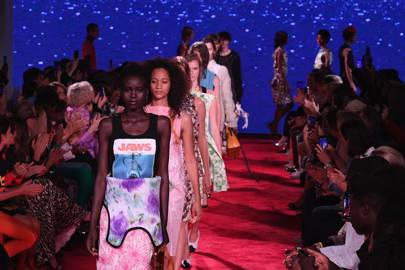Michelle Kessler-Sanders, president of Calvin Klein 205W39NYC, will be leaving the company in June after closing down that segment of the business. Fifty employees in the New York office and 50 in the Milan office were let go, and the Italian hub is set to close. Steve Shiffman, chief executive officer of Calvin Klein Inc, will remain in his position and will oversee the changes.
The decision to disengage with the international fashion collection cycle and the costly catwalk shows that come with it certainly has financial merit, but where does that leave the actual product? The brand’s most profitable categories are underwear and denim, which are produced by third party licensing partners. Its aforementioned plan to “[offer] an unexpected mix of influences and [move] at an accelerated pace” is also yet to materialise, although it could likely tap into the model of fellow PVH-owned brand Tommy Hilfiger, which has enjoyed financial success and a raise in profile thanks to see-now, buy-now collaborations with Gigi Hadid and, most recently, Zendaya.

The halo effect, where a brand has multiple strands all influenced by the creative figure at the heart of the brand, did not work for Calvin Klein under Raf Simons. The designer's high-fashion vision, which often riffed thematically on the chasm between the American dream and the American nightmare, alienated the average Calvin Klein customer, who quite probably never fully grasped the meaning of the "205W39NYC" label. Nowhere was this more obvious than in the Calvin Klein stores. In January, the company announced that it would be closing its New York flagship at 654 Madison Avenue, which housed a floor-to-ceiling installation by artist Sterling Ruby showcasing Simons's work.
As the quest for a new Calvin Klein leader continues, it remains unclear what Simons's successor will actually be in charge of designing - if, indeed, it requires a traditional creative director at all.

No comments:
Post a Comment